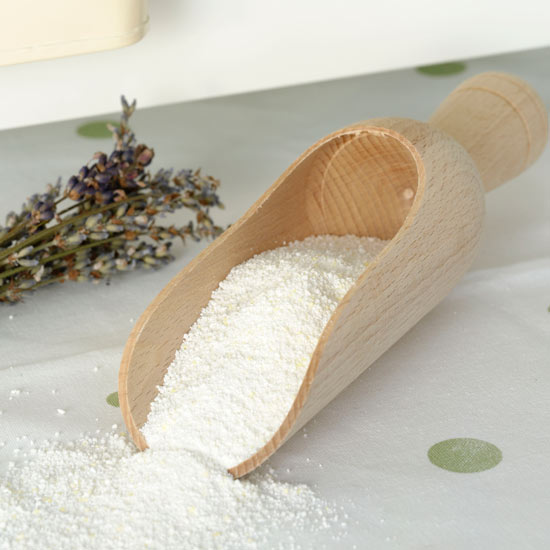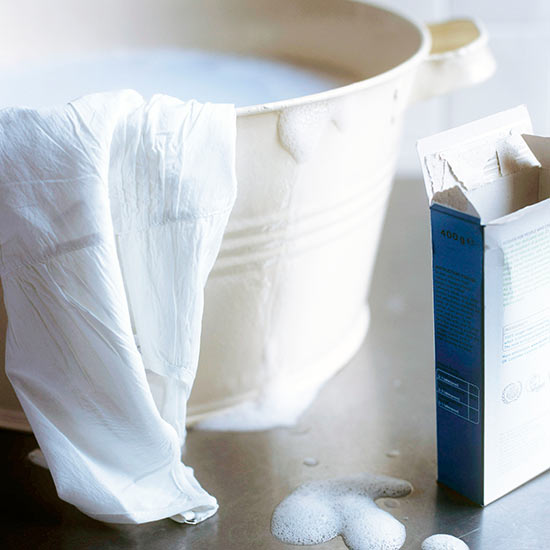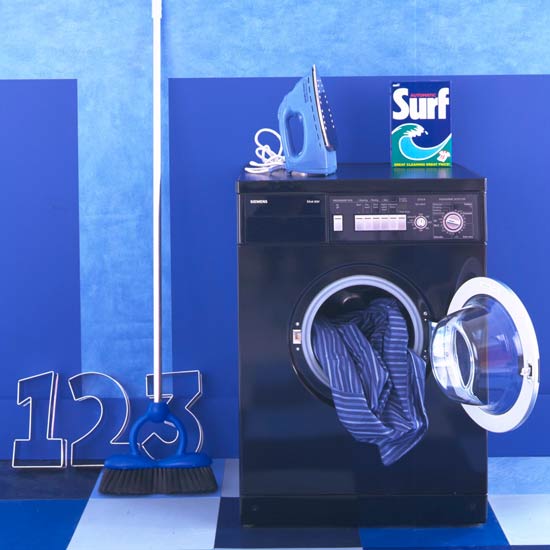Try our top tips on how to clean a washing machine. If your washing machine is looking a bit worse for wear and you're convinced that your whites are not coming out quite so bright, bring it back to life with six little jobs designed to make washing day that little bit better...
How to clean your washing machine
1. Clean the detergent drawer

The detergent drawer can be a haven for germs, encrusted washing powder and mould and it's a little space that can get dirty faster than you would imagine, considering this is where you put the formula designed to clean your clothes and linens!
For the best results, remove the entire drawer and set to work with an old toothbrush and an ordinary domestic cleaner. If you are unsure about how to remove your drawer, consult the user manual. Don't forget to clean the drawer cavity too. It'll be spotless in mere minutes and your clothes will feel fresher instantly.
2. Clean the filter

The debris filter is there to protect your washing machine's pump by stopping lint, stray tissues, coins and general dirt in its tracks. That means that, like the detergent drawer, it's a place where germs collect. It is also warm and humid so provides an ideal breeding ground for dodgy smells to infiltrate the machine... and your laundry.
The solution? Empty it regularly to remove the fluff and dirt that has gathered inside. The washing machine filter is usually located along the lower edge of the machine, behind a hinged cover. Check your user manual if unsure. Carefully free the emergency drain tube and place a bowl or pan on the floor below it. Unplug and allow any trapped __water to drain off. Replace the plug, remove the bowl and lay a towel on the floor. Carefully unscrew or release the filter cover. Any trapped debris should run out with the trapped water, but check inside the cavity to be sure. Wipe around with a cloth, clean any components and replace the cover. Check again that you have replaced the cover properly to prevent any accidental leaks.
3. Clean the drum

Even if the inside of your washing machine looks sparkling clean, it's probably not. There are lots of nooks and crannies where germs can hide and fester. The best thing to do is run an empty wash every couple of months.
Use soda crystals or even dishwasher tablets and run on a hot wash (preferably 60 degrees). This should kill germs, remove odours and stop soap scum and limescale building up in hard-to-see places.
4. Prevent bad smells

Ever opened your washing machine door to be greeted with an unpleasant, musty smell? This may be because the damp conditions of a freshly-run machine are perfect for mould to grow.
Leaving the washing machine door open slightly after washes allows air to circulate around the drum, which helps stop germs breeding and reduces the associated damp scents. Make sure your outside drain is also kept clear of debris and regularly cleaned as odours can feed back up into the machine.
5. Clean the door seal

When you're pushing your washing into the machine and pulling it back out again damp, it's easy to forget about the space between the door and the drum. That rubber seal that's stopping __water from spilling out on to your kitchen or utility room floor is also a place for excess detergent and dirt to hide. If you let this build up, it does turn into mould and becomes increasingly difficult to remove.
Before and after each wash, use a damp cloth to give the seal a gentle wipe and that should be enough to keep this part of the machine in good nick. It also means your clean washing doesn't pick up fresh dirt as you take it out to dry.
6. Use the right detergent

When you're faced with the mind-blowing array of detergents lined up on the supermarket shelves, it's easy to think only about the effect they have on your clothes. Interestingly extra suds and liquid softeners have been linked to leaving a residue in the machine that may contribute to bad smells and mould.
In short, if you want to be kinder to your washing machine (and help it last longer) use powder rather than liquids.
Need a new washing machine? See our How to buy a new washing machine guide.
No comments:
Post a Comment